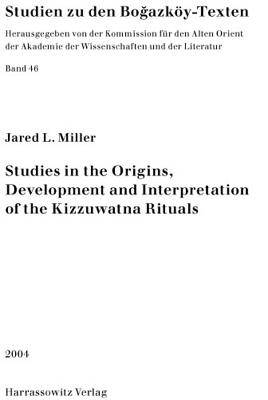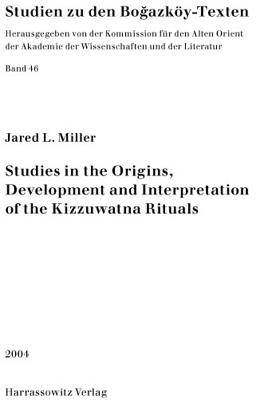
- Afhalen na 1 uur in een winkel met voorraad
- Gratis thuislevering in België vanaf € 30
- Ruim aanbod met 7 miljoen producten
- Afhalen na 1 uur in een winkel met voorraad
- Gratis thuislevering in België vanaf € 30
- Ruim aanbod met 7 miljoen producten
Zoeken
Studies in the Origins, Development and Interpretation of the Kuzzuwatna Rituals
Jared L Miller
€ 300,45
+ 600 punten
Omschrijving
The study seeks to shed light on the genesis and redactional history of the multi-layered 'Kizzuwatna rituals', a 15th-13th centuries BCE Hittite, Luwian and Hurrian cuneiform corpus unearthed in the excavations of the Hittite capital, Hattusa.It presents transliterations, translations, commentaries and analyses of all manuscripts of two groups of compositions, the rituals attributed to the 'old woman', Mastigga, and those dealing with an expansion of the cult of the Deity of the Night. The myriad manuscripts of the Mastigga compositions allow one to follow their convoluted evolution from the middle of the Middle Hittite period (or earlier) through to the end of the Empire. The Expansion, in contrast, is preserved primarily on a single tablet, amenable rather to a thorough internal, structural analysis of the text, aimed at unravelling the threads found within it.A more eclectic section seeks to better define what constitutes a Kizzuwatna ritual, and to more clearly differentiate between the Hittite, Luwian and Hurro-Syrian strata found therein. It then attempts to counter the conception that the original transition from the oral to the written occurred primarily through an interview-like process - or even a cross-examination of sorts - and instead to suggest that the rituals were created principally by scribes who generally did not resort to direct observation and recording, but relied on their familiarity with current practices, thereby creating prescriptive rather than descriptive compositions.
Specificaties
Betrokkenen
- Auteur(s):
- Uitgeverij:
Inhoud
- Aantal bladzijden:
- 591
- Taal:
- Engels
- Reeks:
- Reeksnummer:
- nr. 46
Eigenschappen
- Productcode (EAN):
- 9783447050586
- Verschijningsdatum:
- 1/10/2004
- Uitvoering:
- Hardcover
- Formaat:
- Genaaid
- Afmetingen:
- 176 mm x 240 mm
- Gewicht:
- 1247 g

Alleen bij Standaard Boekhandel
+ 600 punten op je klantenkaart van Standaard Boekhandel
Beoordelingen
We publiceren alleen reviews die voldoen aan de voorwaarden voor reviews. Bekijk onze voorwaarden voor reviews.








